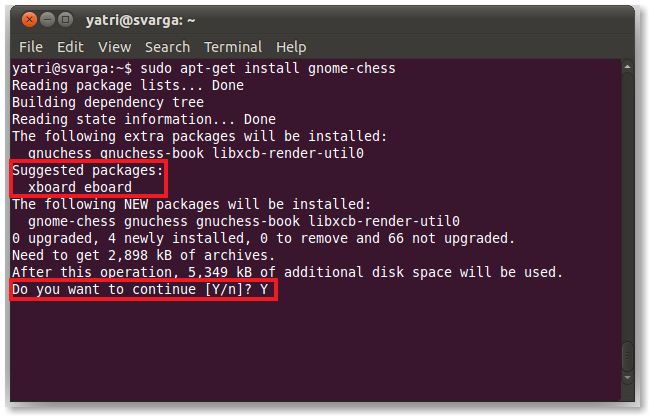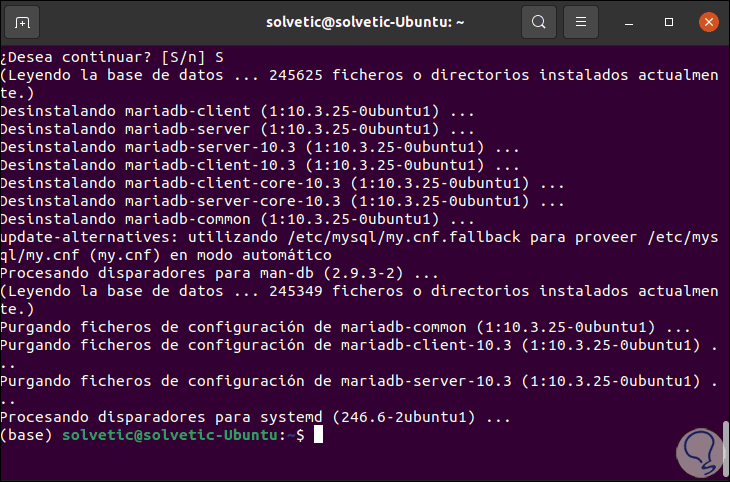

- #Sudo apt uninstall how to
- #Sudo apt uninstall install
- #Sudo apt uninstall software
- #Sudo apt uninstall code
Note that the command parameter -f / –fix-broken install will fix broken dependencies and correct possible package corruption problems. Sudo apt-get clean & sudo apt-get autoremove In case you want to remove broken packages or packages which weren’t fully installed, run the following command: You can also use the same command using the -r parameter instead of remove.
#Sudo apt uninstall how to
NOTE: Type the actual package name (replace PACKAGE-NAME). might help you How to Completely uninstall PHP and MySQL at ubuntu and install fresh PHP&MySQL in UBUNTU. To remove a package using dpkg run the following command: How I do: Remove python2 sudo apt purge -y python2. To remove an installed package, run the following command: sudo apt remove packagename. The syntax of both commands is identical. But first, you need to know the exact package name through which you installed the software.
#Sudo apt uninstall software
any actual removal or purging is done the next time dselect, apt-get,aptitude, etc are run. On Ubuntu, Debian, and related Linux distributions you can install, update, uninstall and otherwise managing software packages using the apt and apt-get command-line utilities. You can remove installed software from your system through apt-get remove and apt-get purge commands as sudo. NOTE: This program does not install, remove, purge any package. It achieves this by running dpkg -set-selections' and piping in the package name(s) followed bydeinstall’. The dpkg-remove marks package(s) to be removed. Select Uninstall from the actions dropdown.
#Sudo apt uninstall code
If you use Ubuntu, the ubuntu-minimal package depends on sudo. Windows Installer Search for Add or Remove Programs and find Visual Studio Code in the Apps > Apps & features list. For example, if you installed VS Code via the Debian package (.deb) and apt-get package manager, you would run: sudo apt-get remove code. Use apt-cache rdepends sudo and you'll see all packages that depend on it. and it could take a lot of other stuff with it. It combines the most frequently used commands from the apt-get and apt-cache tools with different default values of some options. This command is only used when you are not sure about the name of the program to remove or uninstall.Īnother way is to use dpkg-remove command. While aokellermann is technically correct (the best kind of correct) in that a simple apt-get purge sudo would remove sudo. 4 min read apt is a command-line utility for installing, updating, removing, and otherwise managing deb packages on Ubuntu, Debian, and related Linux distributions. Form which you can select the names of installed programs to remove/uninstall later.

The command dpkg –list shows the list of installed packages. You can remove installed software from your system through apt-get remove and apt-get purge commands as sudo.
You can get the list using dpkg –list command. Method 1: Uninstall the program using apt purge: sudo apt purge
That's all it takes to remove the package, including the configuration files.Before you uninstall packages, you will have to get a list of installed packages. So let's say I want to remove a package named nala including the configuration files, then I will be using the following: sudo apt purge -auto-remove nala So if you want to remove the package, including the configuration files, you will have to use the purge flag instead of remove: sudo apt purge īut I would recommend using the -auto-remove flag here too for removing packages that are not required anymore and just sitting there: sudo apt purge -auto-remove Similarly to package installation, Yum allows you to uninstall (remove in RPM and Yum terminology) both individual packages and a package. I would recommend using the -auto-remove flag with the above command to remove packages that were automatically installed and are no longer required: sudo apt remove -auto-remove Advanced Tip: Remove the package including config files on UbuntuĪs I mentioned earlier, using the apt remove command will not remove the configuration file. So let's say I want to remove a package named nala, so I will be using the following: sudo apt remove nala Once you know the exact package name, execute the command in shown fashion: sudo apt remove Using sudo apt remove will only remove the package and the configuration files will remain intact.


 0 kommentar(er)
0 kommentar(er)
